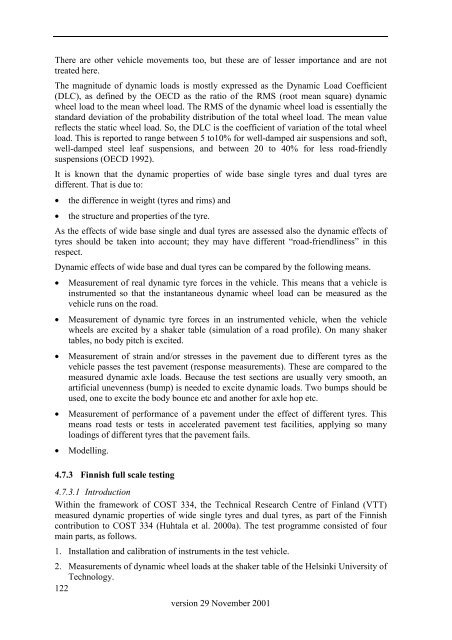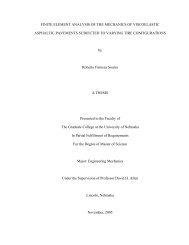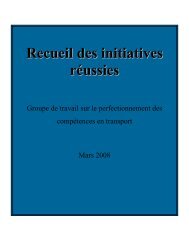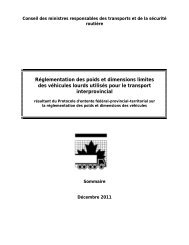Create successful ePaper yourself
Turn your PDF publications into a flip-book with our unique Google optimized e-Paper software.
There are other vehicle movements too, but these are of lesser importance and are nottreated here.The magnitude of dynamic loads is mostly expressed as the Dynamic Load Coefficient(DLC), as defined by the OECD as the ratio of the RMS (root mean square) dynamicwheel load to the mean wheel load. The RMS of the dynamic wheel load is essentially thestandard deviation of the probability distribution of the total wheel load. The mean valuereflects the static wheel load. So, the DLC is the coefficient of variation of the total wheelload. This is reported to range between 5 to10% for well-damped air suspensions and soft,well-damped steel leaf suspensions, and between 20 to 40% for less road-friendlysuspensions (OECD 1992).It is known that the dynamic properties of wide base single tyres and dual tyres aredifferent. That is due to:• the difference in weight (tyres and rims) and• the structure and properties of the tyre.As the effects of wide base single and dual tyres are assessed also the dynamic effects oftyres should be taken into account; they may have different “road-friendliness” in thisrespect.Dynamic effects of wide base and dual tyres can be compared by the following means.• Measurement of real dynamic tyre forces in the vehicle. This means that a vehicle isinstrumented so that the instantaneous dynamic wheel load can be measured as thevehicle runs on the road.• Measurement of dynamic tyre forces in an instrumented vehicle, when the vehiclewheels are excited by a shaker table (simulation of a road profile). On many shakertables, no body pitch is excited.• Measurement of strain and/or stresses in the pavement due to different tyres as thevehicle passes the test pavement (response measurements). These are compared to themeasured dynamic axle loads. Because the test sections are usually very smooth, anartificial unevenness (bump) is needed to excite dynamic loads. Two bumps should beused, one to excite the body bounce etc and another for axle hop etc.• Measurement of performance of a pavement under the effect of different tyres. Thismeans road tests or tests in accelerated pavement test facilities, applying so manyloadings of different tyres that the pavement fails.• Modelling.4.7.3 Finnish full scale testing4.7.3.1 IntroductionWithin the framework of <strong>COST</strong> <strong>334</strong>, the Technical Research Centre of Finland (VTT)measured dynamic properties of wide single tyres and dual tyres, as part of the Finnishcontribution to <strong>COST</strong> <strong>334</strong> (Huhtala et al. 2000a). The test programme consisted of fourmain parts, as follows.1. Installation and calibration of instruments in the test vehicle.2. Measurements of dynamic wheel loads at the shaker table of the Helsinki University ofTechnology.122version 29 November 2001






